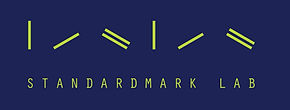
Your Product Benchmarking Services
- The Key To Greater Market
Chlorine Reduction Testing
Water chlorination is the process of adding chlorine or chlorine compounds such as sodium hypochlorite to water. This method is used to kill certain bacteria and other microbes in tap water as chlorine is highly toxic. In particular, chlorination is used to prevent the spread of waterborne diseases such as cholera, dysentery, and typhoid.
According to the World Health Organisation (WHO) and Malaysia Ministry of Health (MOH) drinking water guideline, it allows up to 5 mg/l of chlorine residue in drinking water, where 0.2-0.5mg/l is sufficient to sterilise drinking water. Therefore, the remaining free chlorine can react with naturally occurring organic compounds found in the water supply to produce compounds known as disinfection by-products (DBPs). The most common DBPs are trihalomethanes (THMs) and haloacetic acids (HAAs). Trihalomethanes are the main disinfectant by-products created from chlorination with two different types, bromoform and dibromochloromethane, which are mainly responsible for health hazards. Moreover, high free chlorine residue introduce bad taste and odour to the water.
NSF 42 - Drinking Water Treatment Units - Aesthetic Effects
Standardmark Laboratory is the first to introduce accredited NSF 42 testing in Malaysia, the Standard is the leading industry standard in analysing water treatment units performance. It is important to consider your product is up to the benchmark or product performance claims when entering the competitive filtration marketplace.
According to multiple studies cited by EPA and NSF, claims that activated carbon capable of effective removal of between 60-80 chemicals from the tap water. However, the performance of activated carbon is vary depending on its materials, granular sizes, water flow rate & water temperature.




AS/NZS 4348 - Water Supply - Domestic Type Water Treatment Appliances - Performance Requirements
Our laboratory also offers the Australia requirement in chlorine reduction for activated carbon filter.
Contact us for further information.